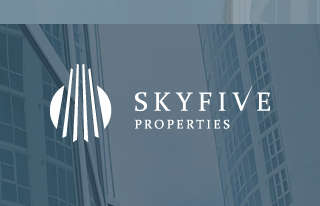Categories
Choose Language





Popular Posts

Exploring New Trends in Construction Materials
The construction industry is rapidly evolving, with new materials and techniques emerging to meet the growing demands for sustainability, efficiency, and resilience. As urban environments expand and the need for robust infrastructure increases, industry professionals are exploring innovative materials that enhance both the performance and sustainability of modern buildings. With the spotlight on greener solutions, the transformation of construction materials plays a pivotal role in shaping our future cities.
Sustainable Alternatives in Concrete
One of the key factors driving this evolution is the shift towards eco-friendly alternatives that reduce the carbon footprint of buildings. For decades, concrete takeoff services relied heavily on traditional materials such as concrete, steel, and wood. Today, developers and builders are focusing on incorporating sustainable practices and advanced materials that address environmental challenges while maintaining structural integrity. In commercial projects, commercial concrete is still a fundamental material due to its versatility and strength, but advancements in technology have significantly improved its environmental profile. By using recycled aggregates and alternative binders, the industry has been able to cut down on carbon emissions associated with concrete production, making it a more sustainable option for urban development.
The Rise of Composite Materials
Another trend shaping the future of construction is the growing use of composite materials. These innovative materials are engineered by combining two or more distinct components to create a product that has superior characteristics compared to its individual elements. For instance, fibre-reinforced polymers are gaining popularity in the construction sector due to their lightweight properties, high strength, and resistance to corrosion. These composites are particularly useful in infrastructure projects, such as bridges and high-rise buildings, where reducing weight without compromising strength is crucial.
Smart Materials: The Game Changers
The adoption of smart materials is revolutionising the way buildings are constructed and maintained. Self-healing concrete, for example, is an exciting development that addresses one of the most common challenges in construction: the formation of cracks. This material contains bacteria or polymers that react to moisture, allowing the concrete to “heal” itself when cracks appear. Such innovations help extend the lifespan of structures and reduce maintenance costs, ultimately contributing to a more sustainable approach to building.
Sky Five Properties is one of the real estate companies leading the charge in integrating these new materials into their projects. By adopting cutting-edge technologies and sustainable building practices, they aim to create urban spaces that are not only functional but also minimise environmental impact. Their approach to construction demonstrates the potential for combining innovation with a commitment to creating eco-friendly and future-proof developments.
3D Printing and Modular Construction
In addition to advanced materials, construction techniques are also evolving to maximise efficiency and sustainability. One such approach is 3D printing, which has gained attention for its potential to reduce waste, speed up construction times, and lower costs. By using 3D printing to create building components, companies can significantly cut down on the material used, ensuring more precise and resource-efficient construction. This technology is especially promising for affordable housing projects, where reducing both time and cost is essential to addressing the housing crisis.
The Benefits of Cross-Laminated Timber
Cross-laminated timber (CLT) is another emerging trend in sustainable construction. This engineered wood product is gaining traction as a viable alternative to steel and concrete, particularly in mid-rise and high-rise buildings. Cross-laminated timber is not only strong and durable but also has a lower carbon footprint compared to traditional materials, as it stores carbon dioxide rather than emitting it. As building codes evolve and new innovations are introduced, CLT is set to become a key component of sustainable urban construction.
Nanotechnology and Next-Generation Materials
Nanotechnology is also playing a role in the development of next-generation construction materials. By manipulating materials at the nanoscale, researchers can create products with enhanced properties, such as increased strength, improved thermal insulation, and greater resistance to wear and tear. One example of this is the use of nanoparticles in coatings, which can provide surfaces with self-cleaning properties or enhanced resistance to fire and moisture.
Phase-Change Materials for Energy Efficiency
With an increasing focus on energy efficiency, new materials are also being developed to help regulate temperature within buildings. Phase-change materials (PCMs) are a prime example of this. These materials can absorb, store, and release large amounts of energy, making them ideal for use in building envelopes to reduce heating and cooling demands. By integrating PCMs into walls or roofs, builders can significantly improve a building’s thermal performance and reduce reliance on air conditioning and heating systems.
Conclusion
The future of construction is undeniably exciting, with innovations in materials paving the way for smarter, more sustainable, and efficient building practices. From self-healing concrete to cross-laminated timber, the industry is undergoing a transformation that will shape how our cities are built for generations to come. By embracing these trends, developers can create structures that are not only resilient but also contribute positively to the environment.
Photo by Sururi Ballıdağ “DIRECTOR”: https://www.pexels.com/photo/cement-on-construction-site-16227443/
Popular Posts:

Kaya Wittenburg
Kaya Wittenburg is the Founder and CEO of Sky Five Properties. Since the age of 10, real estate has been deeply ingrained into his thoughts. With world-class negotiation and deal-making skills, he brings a highly impactful presence into every transaction that he touches.
He is here to help you use real estate as a vehicle to develop your own personal empire and feel deeply satisfied along the way. If you have an interest in buying, selling or renting property in South Florida, contact Kaya today.













